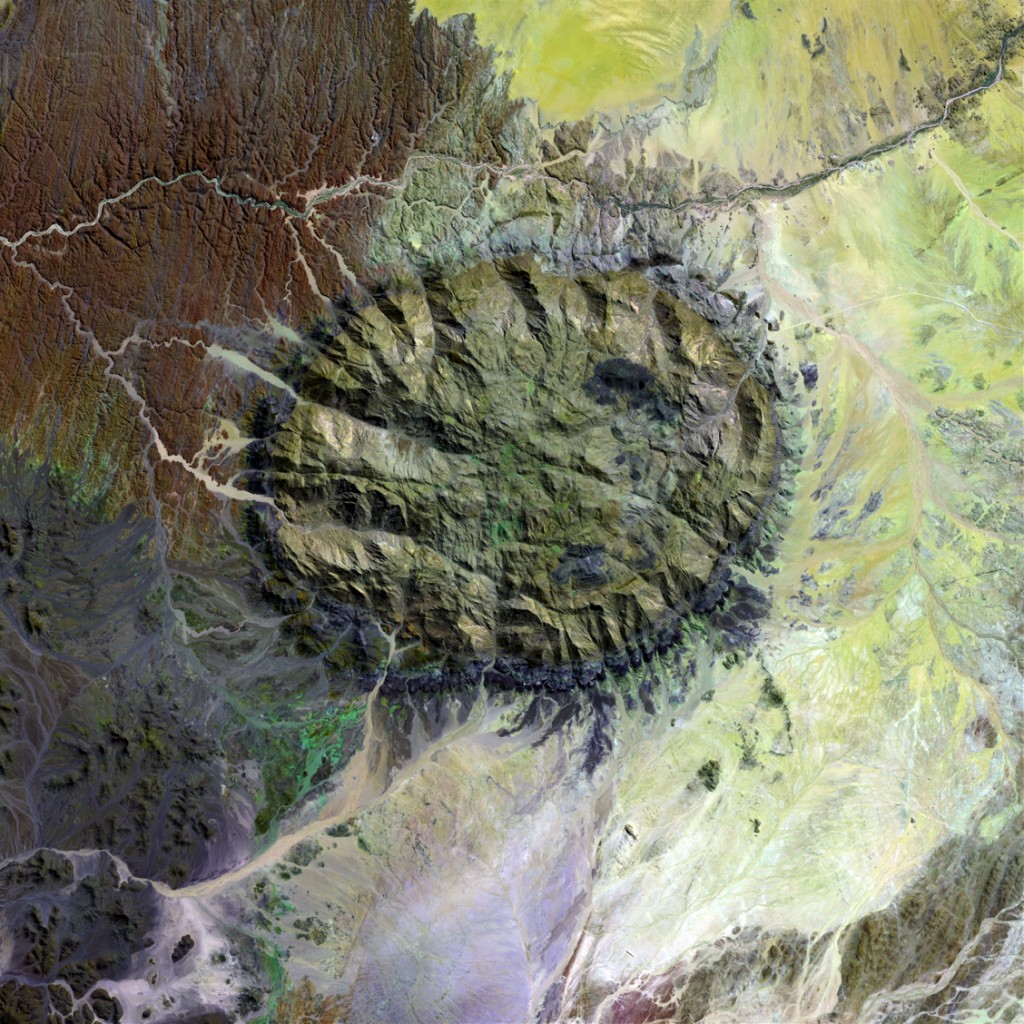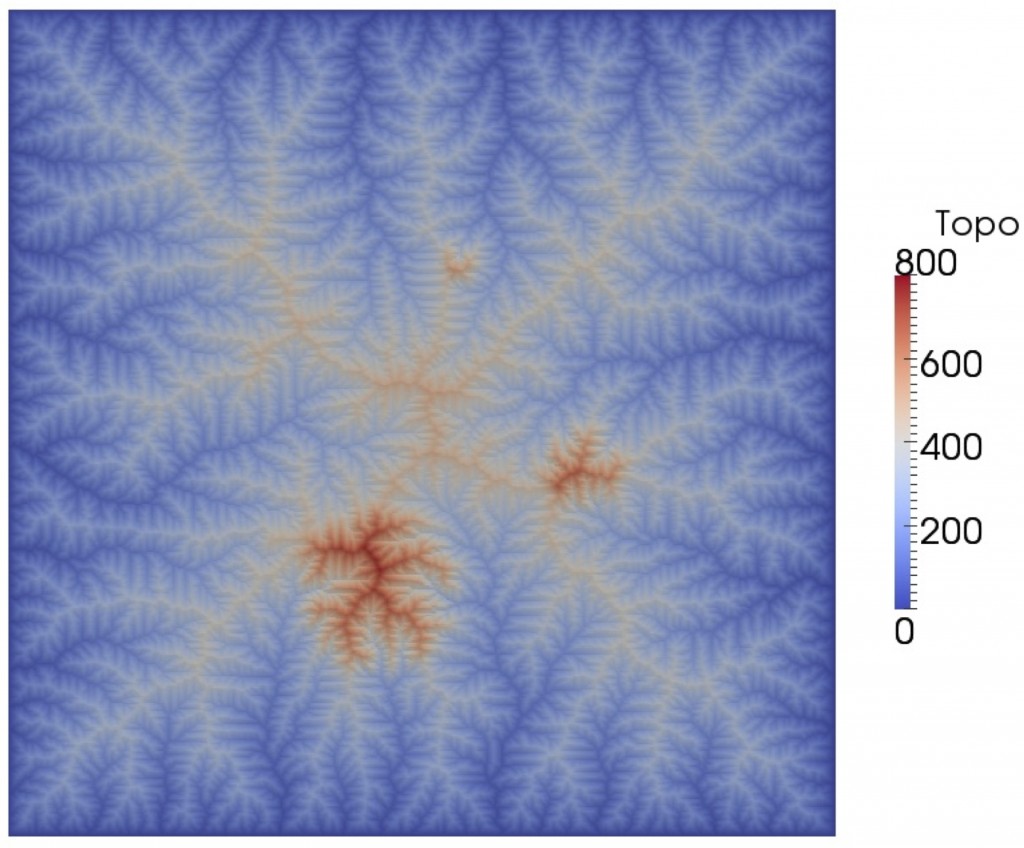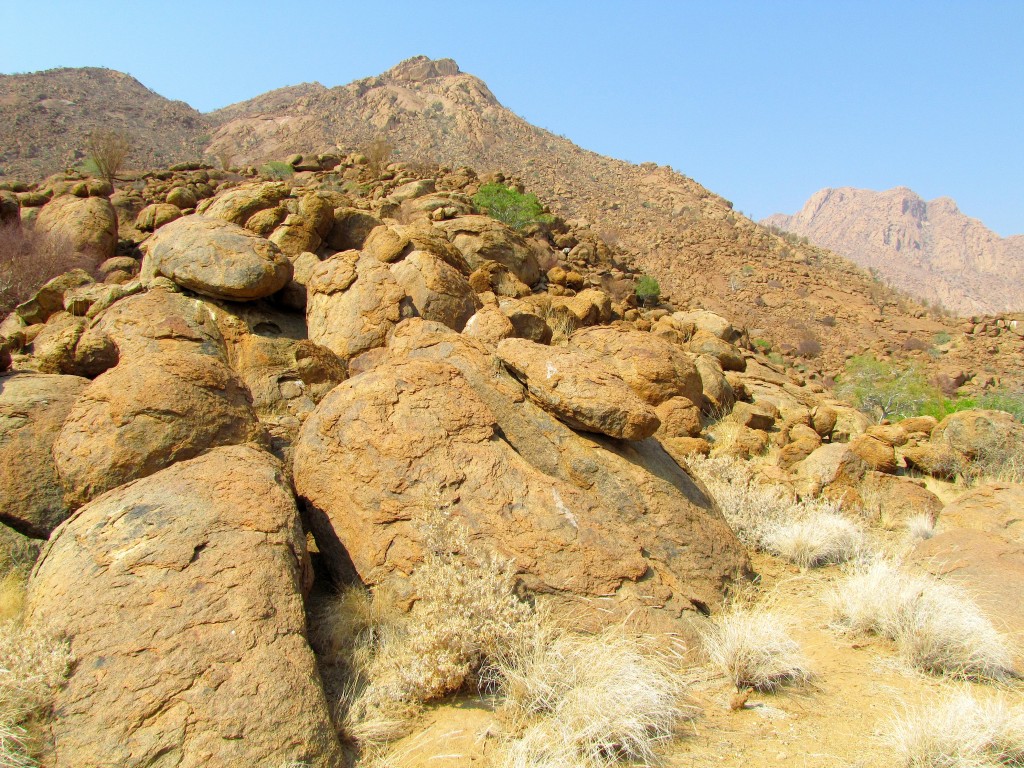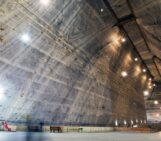From space, the Brandberg Igneous Complex looks like a coffee-coloured birthmark set upon the bony complexion of the Namibian desert. Perfectly circular, its peaks soar in a ring of mighty topography, its massive granite cliffs etched with the muscular definition of spheroidal weathering. Its bulk seems to rise out of the barren landscape, driven upward by some unseen force.
In fact, granite intrusions like the Brandberg may actually be uplifted by powerful forces, unseen but not unfamiliar. New research, presented at the American Geophysical Union Fall Meeting last week in San Francisco, suggests that granite features like the Brandberg may owe their towering height to the elementary principle of isostasy.
Since Grove Gilbert first measured the formidable hardness and high density of granite in the 19th century, most geologists have attributed the striking topographic relief of many granite peaks to the former; they argued that granite was simply more resistant to erosion. But Jean Braun, of the Institute of Earth Sciences (ISTerre) at University Joseph Fourier in Grenoble, thinks the high density of granite paradoxically deserves the credit.

A Landsat 7 image of the Brandberg Igneous Complex in Namibia (Credit: NASA).
As most students learn in Geology 101, crustal rocks float on the asthenosphere like icebergs in the sea. The density contrast between the ice and the water dictates how much of the iceberg rises above the sea surface, and the same is true of rocks. Furthermore, when you melt an iceberg or passively erode a piece of crust, it will rebound to compensate. On average, the crust rebounds by about 700 metres for every kilometre of erosion. “That’s a well-accepted consequence of local isostasy,” Braun says. “The key is that this ratio can easily vary when you change the density of the surface rocks.”
For granite, whose density can exceed that of the rocks it intrudes by hundreds of kilograms per cubic metre, the rate of isostatic rebound can more than double. “There is nothing new about some granites being denser than the rocks they intrude and there is nothing new about the principle of isostasy,” Braun says. What is new is the realisation – albeit a counterintuitive one – that denser rocks will rebound faster than lighter rocks.
Braun and his colleagues demonstrated this by modelling the evolution of a hypothetical landscape using a surface process model that included isostatic effects. They varied the hardness and density of the surface rocks in the model and found that while resistance to erosion played a small role in preserving topographic high points, the enhanced isostatic rebound associated with density changes was the primary factor behind the high elevation of granite features.
However, there is some limit to the amount of isostatic rebound that can occur by this mechanism. “The principle of localised isostasy assumes that the Earth is made of vertical columns of lithosphere that can slide with respect to each other in any way,” Braun says. “However, we know this is not the case.” Instead, the intrusion must be of the same scale as the elastic thickness of the crust – a measure of its lateral strength. For example, in the thick, strong interior of continents, dense features must be about 100 kilometres long to rebound faster than the rocks around them while in weaker crustal regions, even small granite features can experience enhanced uplift.
After presenting these results at conferences like the AGU Fall Meeting, Braun’s idea has been met with nearly universal enthusiasm and support. “It’s too basic to not be true,” jokes Braun. Mostly, he and others just wonder, “how come we didn’t think of this before?”

The preliminary results of Braun’s modeling show that denser features form higher elevations (shown in red). (Courtesy of Jean Braun)
On top of explaining the high elevation of granites, Braun’s theory may have broader applications for other places on Earth where surface rocks vary substantially in density. For instance, Braun cites rapidly uplifting mafic domes in a tectonically quiescent corner of the Tibetan Plateau. “These examples show that there is a simple isostatic component that has not been considered many places where you have large variations in rock density,” Braun says.
The next step is to test these theories against low-temperature thermochronology datasets, including apatite fission track and helium dates. These measures provide an estimate of the rate of cooling and uplift for large intrusions, and can be used to validate Braun’s hypothesis. Although the existing data support the idea that dense bodies experience enhanced isostatic rebound, none were collected with this purpose in mind. So next year, Braun and his colleagues will head to the Brandberg, where the granite bulges out of the Namibian desert, to see whether denser rocks really do rise higher.
By Julia Rosen, freelance writer and PhD student at Oregon State University






Pingback: Go, granite, go! | julia rosen